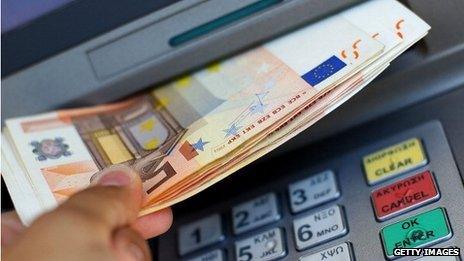Regulators reveal details of European bank stress tests
- Published

The stress tests are designed to be tougher than 2011
European banks will be expected to prove they can survive a 7% drop in GDP under new tougher stress tests unveiled by the regulator.
It says banks should also be able to withstand a 14% fall in house prices and up to a 19% drop in share prices under a worst-case scenario.
The tests are designed to try and prevent further taxpayer bailouts.
The regulator said, external the tests would "address remaining vulnerabilities in the EU banking sector".
"It will provide a common framework for the next stops to be taken by supervisors and banks," said European Banking Authority (EBA) chair Andrea Enria.
The tests are much tougher than the EBA's 2011 stress tests when it projected a worst-case scenario of just a 0.5% fall in GDP.
At the time, the tests were widely criticised for being too soft, particularly after 18 of the EU's 27 countries at that time had weaker growth than the "adverse" case they were tested for.
"The key is that the scenario is at least as deep and dark as the great recession, the financial crisis of 2008/2009," said Mark Zandi, Philadelphia-based chief economist at Moody's Analytics.
Banks that fall short of capital under the EBA's worst-case imagined scenarios will have to produce a plan to boost their reserves by raising fresh funds from investors, selling assets or hanging on to profits instead of paying dividends.
European banks have already made several reforms, including raising billions of capital ahead of the latest tests.
"What we're looking for is relevance of the scenarios, do they address what we believe is the risk on the ground?" said Neil Williamson, head of EMEA credit research at Aberdeen Asset Management.
- Published26 February 2014
- Published24 February 2014